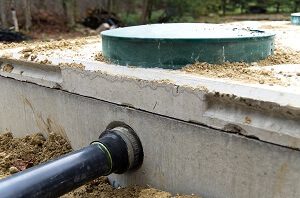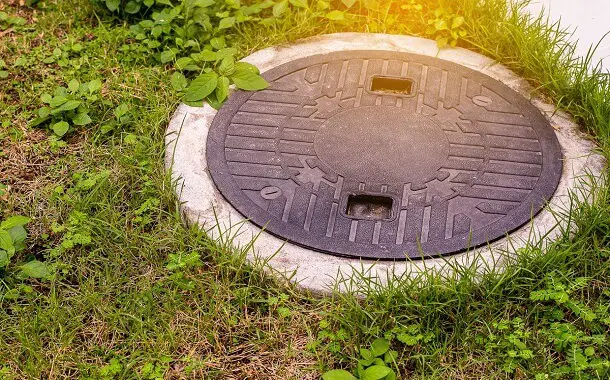Cost to Replace a Septic Tank and Leach Field
Last Updated on December 29, 2023
Written by CPA Alec Pow | Content Reviewed by ![]() CFA Alexander Popinker
CFA Alexander Popinker
Each city has its own water supply and sewage system, organized and managed under the coordination and responsibility of the local administration. Such a public network works by exploiting a specific technical-building infrastructure.
In the case of localities isolated from public sewerage systems, the option is to create individual systems for the collection of wastewater from households. Building your own wastewater collection and purification systems is most often done by installing a septic tank in the ground. The septic tank is a combination of collecting basins, each of which has a very well-defined role in the process of collecting, treating, and disposing of wastewater.
How Much Does It Cost to Replace a Septic Tank and Leach Field?
The cost of replacing a septic tank and leach field is affected by various factors such as the local cost factors and the size of the field and tank. Though, you should usually expect to spend anywhere between $6,800 and $16,500 to replace a septic tank and leach field. The average cost would be around $12,700.
In case you choose to deal with this project yourself, which is nearly impossible, you will spend around $3,800.
Cost of septic system replacement by type
- Engineered mound system: $11,000 to $14,500
- Evapotranspiration system: $9,000 to $12,900
- Gravity/anaerobic system: $6,800 to $8,600
- Sand filter septic system: $8,000 to $13,500
- Aerobic treatment system: $7,500 to $11,500
Cost of the leach field, septic tank, supplies, and disposal costs
Cost of the septic tank by material
- Concrete septic tanks: $750 to $2,500
- Plastic septic tanks: $940 to $2,750
- Fiberglass septic tanks: $1,580 to $3,250
Cost of the septic tank by size
- 500-gallon septic tanks: $750 to $1,410
- 750-gallon septic tanks: $1,000 to $1,810
- 1,000-gallon septic tanks: $1,450 to $2,330
- 1,250-gallon septic tanks: $1,735 to $2,650
- 1,500-gallon septic tanks: $1,985 to $3,220
Removal and disposal of the old system: $1,200 to $2,100
Percolation test: $500 to $1,550
You might also like our articles on the cost of septic tank pumping out, mount vs conventional septic systems, and aerobic vs anaerobic septic systems.
Pumping the old tank: $320 to $950 (up to 1,500-gallon tanks)
Design and engineering: $1,300 to $2,550
Sand and gravel: $20 to $45 per cubic yard (most systems need anywhere between 30 and 60 cubic yards of material)
Plastic riser and lid: $80 to $155
High water pump alarm for mound systems: $500 to $820
Wastewater pipe from the house to the tank: $85 to $160
Tank pump for engineered mound systems: $360 to $660
Perforated sewer pipe for leach field: $2 to $3.5 per linear foot (most systems need anywhere between 40 and 75 feet)
Inspection and permits cost
In order to make sure that the system is built as it was designed a permit will be required, which should include a minimum of two inspections. Be prepared to spend permit anywhere between $230 and $420 on this.
Septic tanks and leach field replacement overview
 Septic tanks are sealed underground tanks, in which domestic wastewater produced in households is collected, eliminating the polluting substances concentrated in it, and thus ensuring the retention of solid substances and floating waste to a good extent.
Septic tanks are sealed underground tanks, in which domestic wastewater produced in households is collected, eliminating the polluting substances concentrated in it, and thus ensuring the retention of solid substances and floating waste to a good extent.
As a rule, the main materials from which septic tanks can be built, whether we are talking about ecological ones or other models, are:
- concrete (especially in the case of those built from scratch);
- IBC (Intermediate Bulk Container);
- fiberglass;
- plastic
The septic tank cannot be installed on all lands, especially if they are rocky and cannot be dug. It is also recommended that the soil in which you mount the tank is not clayey. If, when it rains, puddles form and stagnate for a long time, the soil does not absorb the water quickly enough, and the septic tank may not be a suitable solution in this case.
Depending on the specific water consumption of each home, septic tanks are designed and sized for an emptying period of between one and three years. In terms of lifespan, a well-designed and maintained tank, made of fiberglass, concrete, plastic, or polypropylene, can function for approximately 50 years.
Factors affecting the cost of the septic tank and leach field replacement
There are several factors that influence the cost of the septic tank and leach field replacement.
Inspection and permits
In order to make sure that the septic tank system matches the design which was approved by the county or city, a minimum of two inspections will be required at different points in the building of the system.
In order to determine what type of leach field will be needed and what type of materials are the best, you will have to determine the absorption rate of the soil.
Seed or sod
You can choose to sod or seed the ground or the drain field above the tank. Some homeowners’ associations may require you to use sod because this can be used immediately as the evaporative layer of the field. Plus, it has a more appealing appearance.
Type of the leach field
There is an average price tag for the anaerobic field, also known as the conventional field. The cheapest are the evapotranspiration fields, but these can be used only in arid climates where rapid evaporation is possible. On the other hand, the raised mound systems, which need a pump to deliver wastewater to the field, have the highest price.
Root/stump/tree removal
The trees and the roots that have grown around the field or tank have to be removed because they can cause damage.
Field and tank size
In general, the size of the field and tank is determined by the number of bathrooms in a house or the size of the house. But also, the perc test results and the soil types beneath the leach field can determine the sizes of the tanks and field.
Labor costs
Usually, a tank and leach field installation run anywhere between 40% and 50% labor. The rest of the cost includes the permeable soils, pipe, tank, and others.
Location/Tank type
There are different tank specifications and design requirements in each state. For instance, states with stricter rules, such as Florida, require a tank that can cost up to $1,250 more than a standard tank.
Site access
It is essential to get the heavy equipment to the site. The costs will get higher if access to the site is hampered by shrubbery, fencing, or any retaining walls.
Excavating the site
In order to create an effective drain field, the site needs to be prepared, the soils have to be removed and other soils brought in.
Design and engineering
The costs will be significantly higher if there is needed an engineer to design the system, like a mound system.
Septic tank and leach field replacement time
- Excavate the old system, remove it and haul it away – up to one day
- Install the new tank and the materials bed; have the first inspection completed – one to two days
- Install the remaining pipes and equipment; have the final inspection and testing completed – one to two days
- Cover the pipes with sand or other materials, add topsoil and seed or sod – half day
You should know that the work can be delayed by waiting for the inspections to take place.
Hire a pro or DIY?
The installation of the septic tank must be done respecting certain important rules and taking into account some essential criteria so that the results are long-lasting and the owner does not have to redo the work in the near future. So, you should hire a professional for this job.
FAQs
Should you repair or replace the septic tank?
If it breaks or you have problems with the septic tank, you have the option of replacing it or repairing it. If the water stagnates above the drainage or a bad smell is coming from the septic tank, it can most often be from a broken pipe that can be easily changed or replaced.
If the drain is completely clogged, there is a good chance that it will have to be completely replaced.
You can probably still use the septic tank, which helps you save money.
How does the septic tank work?
In the case of the ecological septic tank, the bacteria and enzymes will separate the oils and enzymes from the solid matter in the household water. The oily substances will rise to the surface of the pool, forming a kind of foam, while the solid substances will settle at the bottom of the pool in a layer of mud. The remaining water is then filtered before being drained into the ground.
What can you do to prevent septic tank problems?
In order to prevent clogging of the drainage, it is very important not to use more water than necessary. Using large amounts of water is the main reason why septic tanks get clogged or don’t work properly.
Do not drive or park over the septic tank and drainage. Rainwater must not reach the pit or the drainage field.
It is recommended that at the end of the drainage field you put an inspection mouth, to be able to check the drainage.
How do you choose a septic tank?
The most important factors to take into account when choosing a septic tank are the number of residents of the house and the frequency of use. For example, for a vacation home, which you use once or twice a year, you will not need as big a tank as for a house where four people live permanently.
Also, now you will have to decide if the system will have one or more rooms. There are even versions of tanks with four or five chambers, these having an increased efficiency in decanting and filtering the water.


Leave a Reply
Want to join the discussion?Feel free to contribute!